Did you know there are many kinds of Philodendron? If you’re not familiar with them, don’t worry! This guide will help you learn everything you need to know. It will show you the many benefits of having this plant, share a bit about its history, introduce different types, and give you simple care tips. So, let’s get started and explore the world of Philodendrons together!
“A thing of beauty is a joy forever: Its loveliness increases; it will never Pass into nothingness.”
Philodendron plants are a type of flowering plant that people often grow indoors. In fact, they are beautiful plants that many will undoubtedly love to have in their space. Furthermore, their bright leaves and easy care make them a favorite choice for any home.
Philodendrons also boast large, colorful leaves and come in different sizes, ranging from small desk plants to big floor plants.
They are originally from tropical areas in the Americas. They naturally thrive in warm, humid places. However, if you live in a cooler area, you can still successfully grow them indoors by making sure they have the right care and conditions.
It’s quite easy to care for a philodendron plant. You start by placing it in a spot with bright, indirect light. Water it when the top inch of the soil feels dry to the touch. Moreover, always allow the soil to dry out completely between waterings, as philodendrons are susceptible to root rot. Lastly, make use of a general-purpose fertilizer for the plant every month.
The History Of Philodendrons
Philodendrons are a plant genus that includes some of the most popular houseplants in the world. The word philodendron comes from the Greek words Philos and dendron, which means tree-loving.
Philodendrons are native to the tropical regions of the Americas, from Mexico to Argentina. They are found in a variety of habitats, from rainforests to mountain forests.
Philodendrons were first introduced to Europe in the early 19th century. They became popular houseplants in the Victorian era. Today, philodendrons are still widely grown as houseplants and are very popular in the United States.

There are over 500 species of philodendron, each offering unique characteristics and beauty. Among the most popular species are the heart-leaf philodendron (Philodendron scandens), the tree philodendron (Philodendron bipinnatifidum), and the elephant-ear philodendron (Philodendron domesticum). Furthermore, these species vary not only in their appearance but also in their growth habits and care requirements, making it easy to find one that suits your specific needs.
Philodendrons are easy to care for and can thrive in a wide range of conditions. They are known for their ability to purify the air and improve indoor air quality.
Different Types Of Philodendrons
There are many different types of philodendrons, and they come in a wide range of shapes, sizes, and colors. Some of the most common types include the following:
1. Heartleaf philodendron (Philodendron scandens)
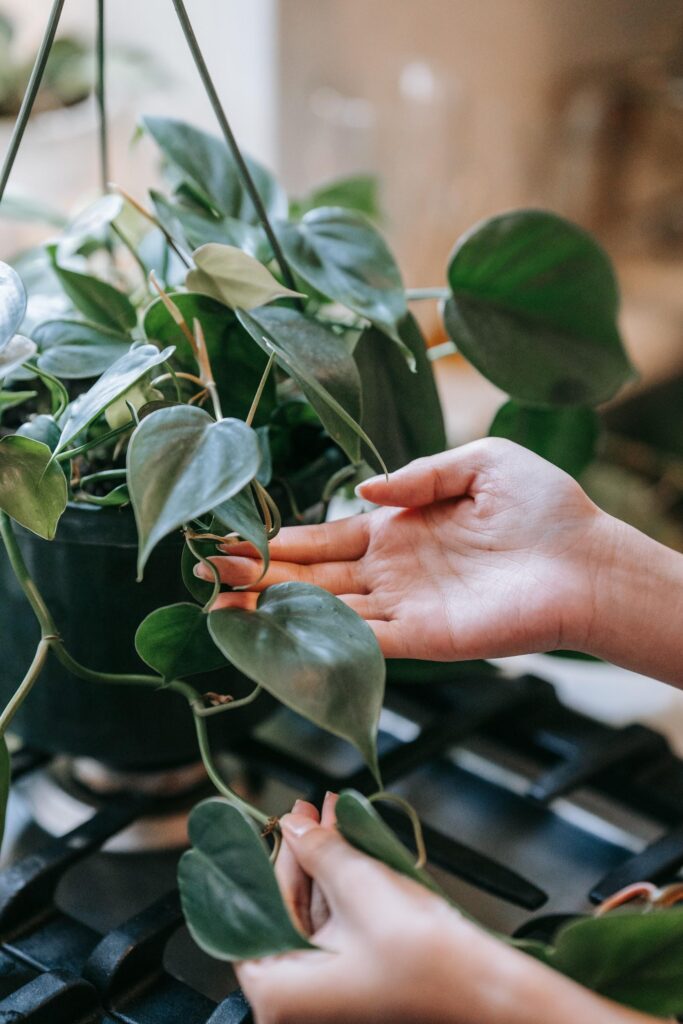
Heartleaf philodendron is one of the most popular, due to its heart-shaped leaves. It is a fast-growing plant that can reach up to 10 feet in length.
2. Climbing philodendron (Philodendron bipinnatifidum)
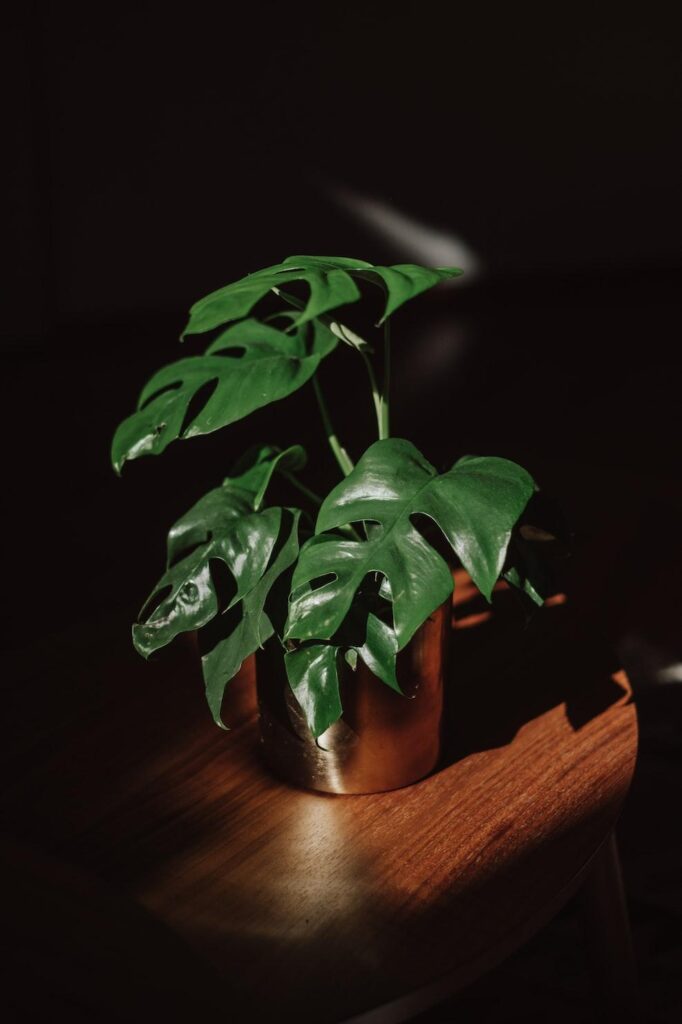
This type of philodendron is, in fact, a strong climber and can grow up to 20 feet long. Additionally, it has deeply divided leaves that are dark green, which adds to its lush, beautiful look. Consequently, it thrives in spaces where it can spread and climb, making it a great choice for vertical spaces in your home.
3. Tree philodendron (Philodendron bipinnatifidum)
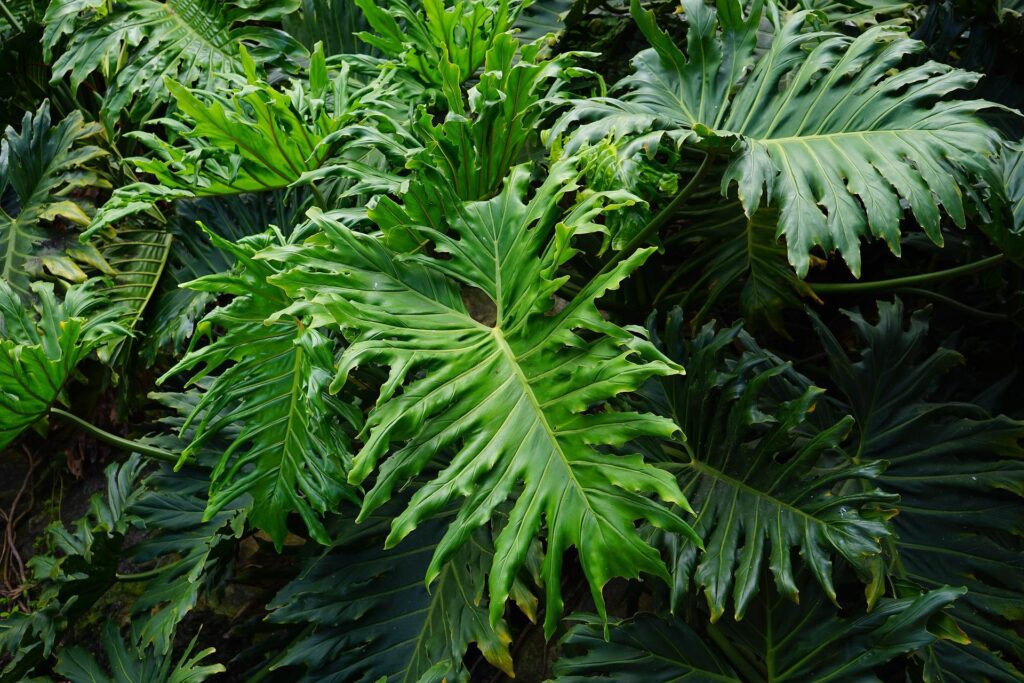
The Tree philodendron is similar to the climbing philodendron, but it has a more tree-like growth habit. It can reach up to 30 feet in height and has deeply divided leaves that are dark green in color.
4. Saddle-leaf philodendron (Philodendron hederaceum)
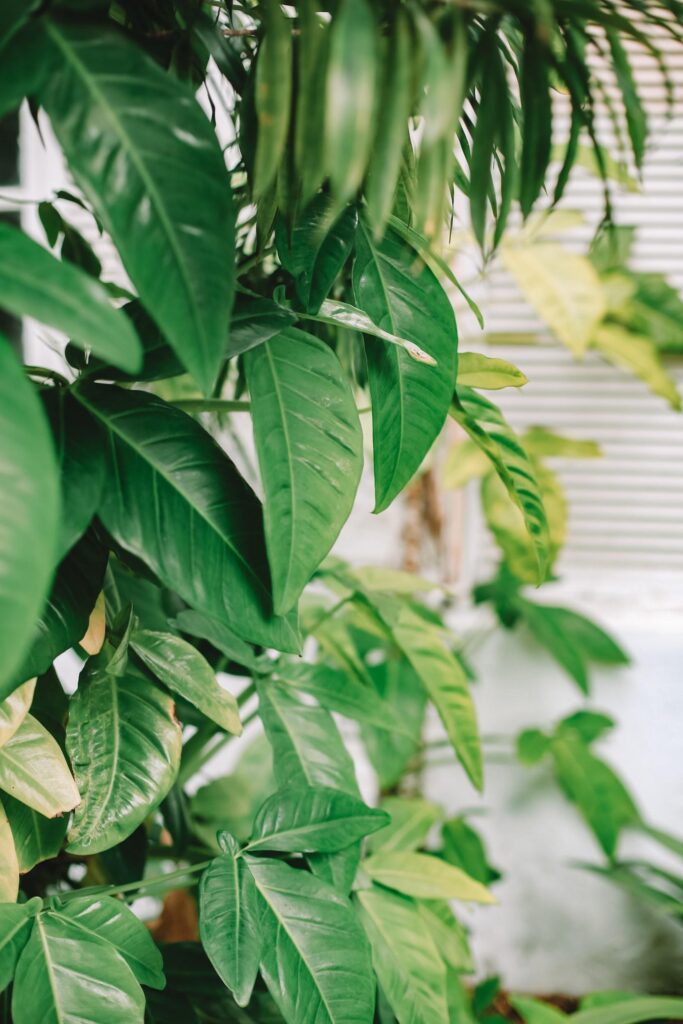
Saddle-leaf philodendron is another type of philodendron. It’s characterized by its saddle-shaped leaves. It is a fast-growing plant that can reach up to 10 feet in length.
5. Red-leaf philodendron (Philodendron erubescens)
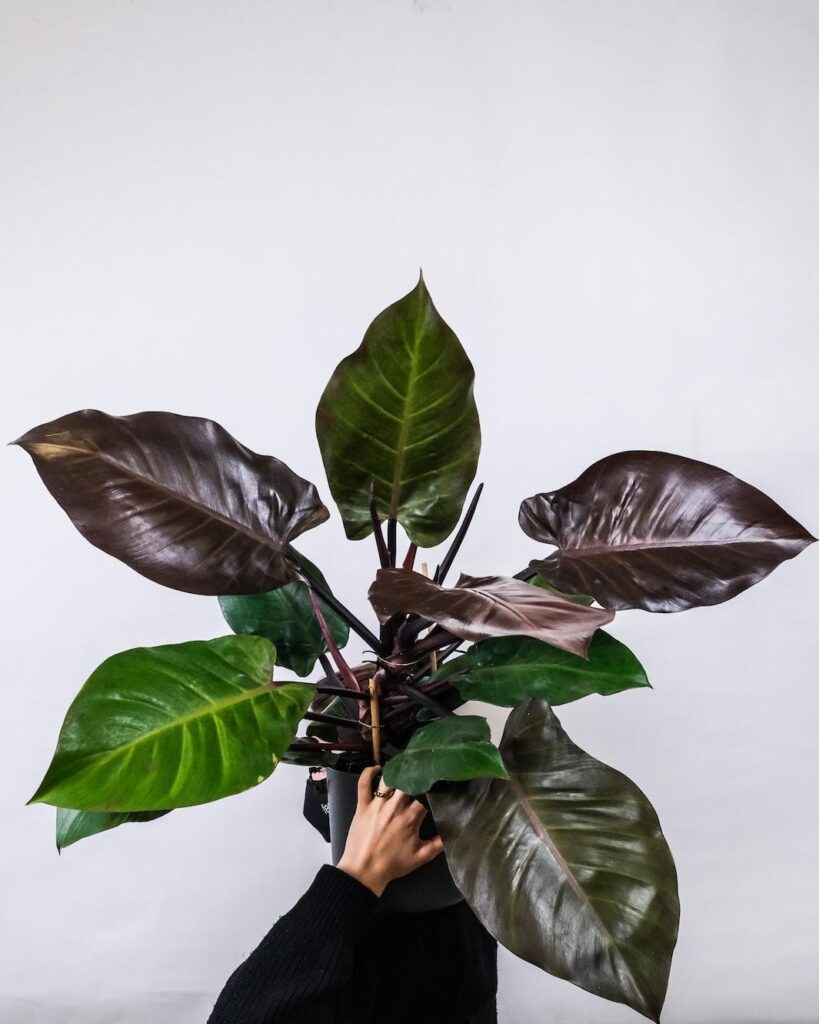
This type of philodendron is, in fact, known for its striking red leaves, which make it stand out in any space. Moreover, it is a fast-growing plant, capable of reaching up to 10 feet in length, especially when given the right growing conditions. As a result, it can quickly become a bold focal point in your home, adding both color and vibrancy to your indoor garden.
6. Snake philodendron (Philodendron verrucosum)
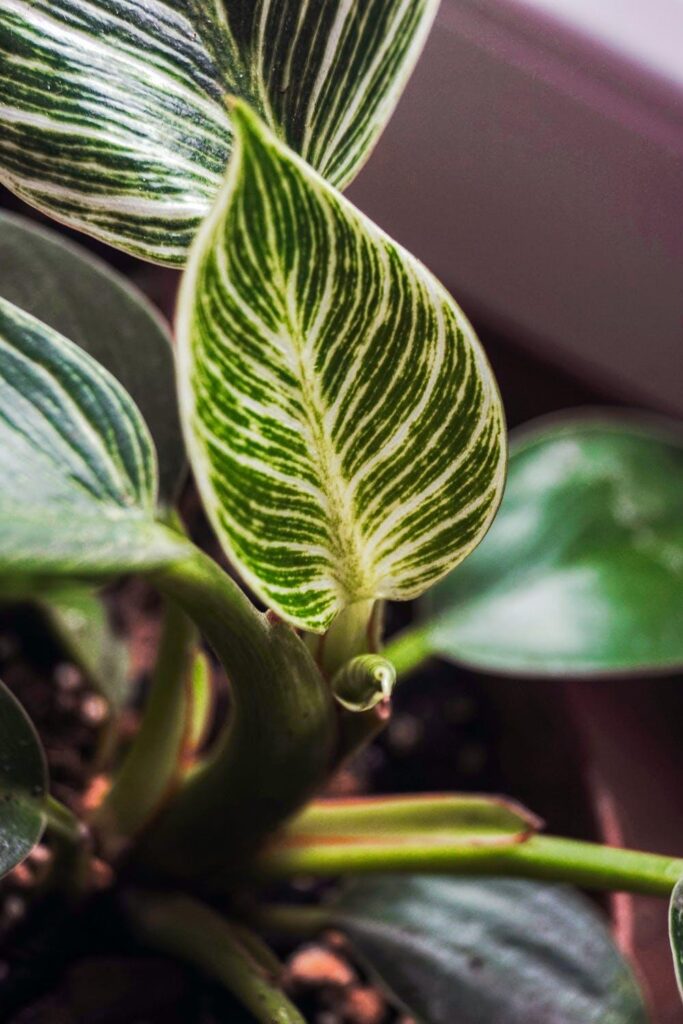
The Snake philodendron, as its name suggests, is known for its unique, snake-like leaves, which give it a distinctive appearance. In contrast to its faster-growing counterparts, it is a slow-growing plant that, over time, can reach up to 5 feet in length.
Furthermore, despite its slower growth, it can still make a striking addition to your collection, offering both beauty and elegance as it gradually matures. Additionally, its resilience and low maintenance requirements make it a great choice for both beginners and seasoned plant enthusiasts.
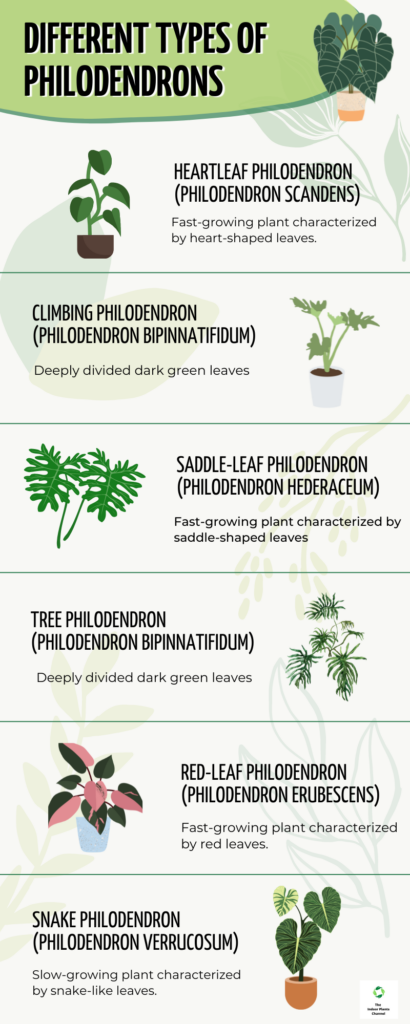
The Benefits Of Philodendrons
Philodendrons are a type of flowering plant that is native to the tropical regions of the Americas. There are many different species of philodendrons, and they come in a variety of colors, shapes, and sizes. Philodendrons are popular houseplants because they are relatively easy to care for and they can thrive in a wide range of indoor environments.
Philodendrons purify the air with their natural ability. Studies have shown that philodendrons can remove harmful toxins from the air, such as formaldehyde and benzene.
- Formaldehyde is a common indoor air pollutant that can cause a variety of health problems, including respiratory irritation and cancer.
- Benzene is another indoor air pollutant that has been linked to cancer.
In addition to purifying the air, philodendrons can also help to improve your indoor air quality by increasing humidity. Indoor air that is too dry can cause a variety of problems, including respiratory infections, dry skin, and static electricity. By increasing the humidity in your home, philodendrons can help to alleviate these problems.
How To Care For Philodendrons
Philodendrons are a type of evergreen plant that is native to tropical regions of the Americas. They feature large, glossy leaves and come in various colors and leaf shapes.
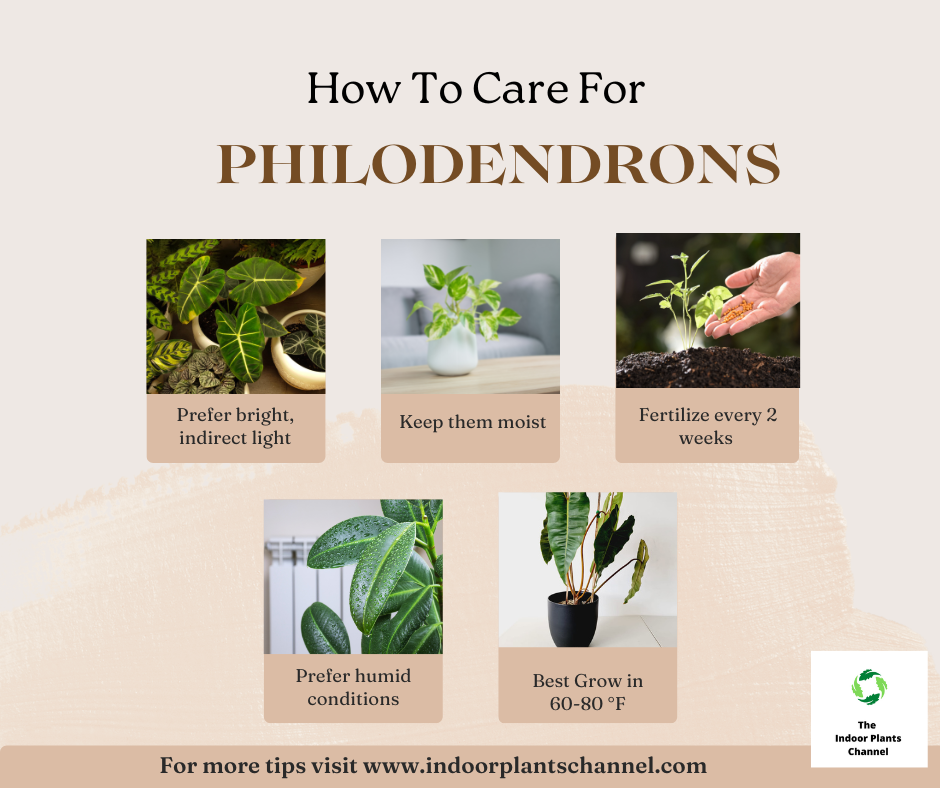
Philodendrons are relatively easy to care for, and they make great houseplants. Here are a few tips on how to care for your philodendron:
- Light: Philodendrons prefer bright, indirect light. If you can provide them with a spot near a window, they will be happy. However, direct sunlight will scorch their leaves, so be sure to keep them out of the direct sun.
- Water: Philodendrons like to be kept moist, but not soggy. Water your plant when the top inch of soil is dry. Ensure to empty any water that collects in the saucer under the pot, as philodendrons do not like to sit in water.
- Fertilizer: Feed your philodendron every two weeks during the growing season (spring and summer) with a general-purpose fertilizer. During the fall and winter, you can reduce the frequency to once a month.
- Temperature: Philodendrons like warm temperatures, between 60 and 80 degrees Fahrenheit. If your home is on the cooler side, you can provide additional warmth by placing your plant near a radiator or using a grow light.
- Humidity: Philodendrons prefer humid conditions, so they make a great plant for bathrooms and kitchens. If your home is on the dry side, you can increase the humidity around your plant by grouping it with other plants, using a pebble tray, or misting it with water.
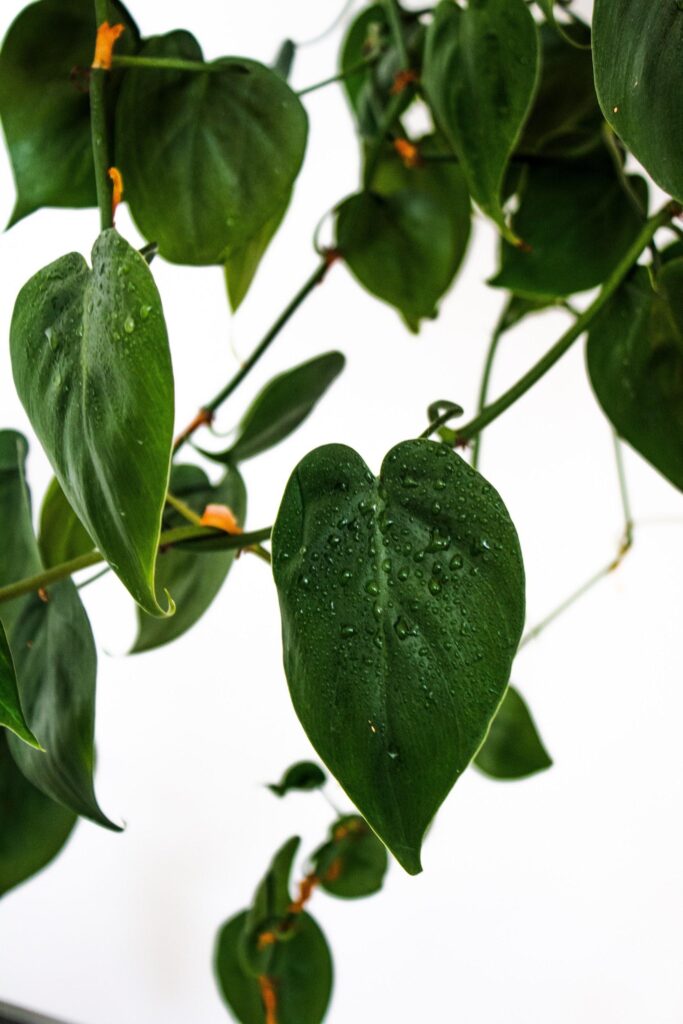
The Best Places To Buy Philodendrons
There are many places where you can buy philodendrons. Here are some of the best places:
- Online stores – There are many online stores that sell philodendrons. You can find a good selection and usually get them at a good price.
- Local nurseries – Local nurseries are a great place to find philodendrons. They usually have a good selection and the staff can help you choose the right plant for your needs.
- Garden centers – Garden centers typically have a good selection of philodendrons. They may be more expensive than other places, but you can usually find what you’re looking for.
- Home improvement stores – Home improvement stores like Home Depot and Lowe’s typically have a good selection of philodendrons. They may be more expensive than other places, but you can usually find what you’re looking for.
- Online classifieds – Online classifieds like Craigslist and eBay is a great places to find philodendrons. You can often find good deals on plants that are in good condition.
The Different Colors Of Philodendrons
Philodendrons come in a wide variety of colors, from the bright green of the common philodendron to the deep red of the red-leaf philodendron. Philodendrons can also be variegated, with leaves that are green and white, or green and yellow.
While the common philodendron is the most well-known, there are many other types of philodendrons that come in a wide variety of colors. Here are some of the most popular types of philodendrons:
- Red-leaf philodendron: As the name suggests, this type of philodendron has leaves that are deep red in color.
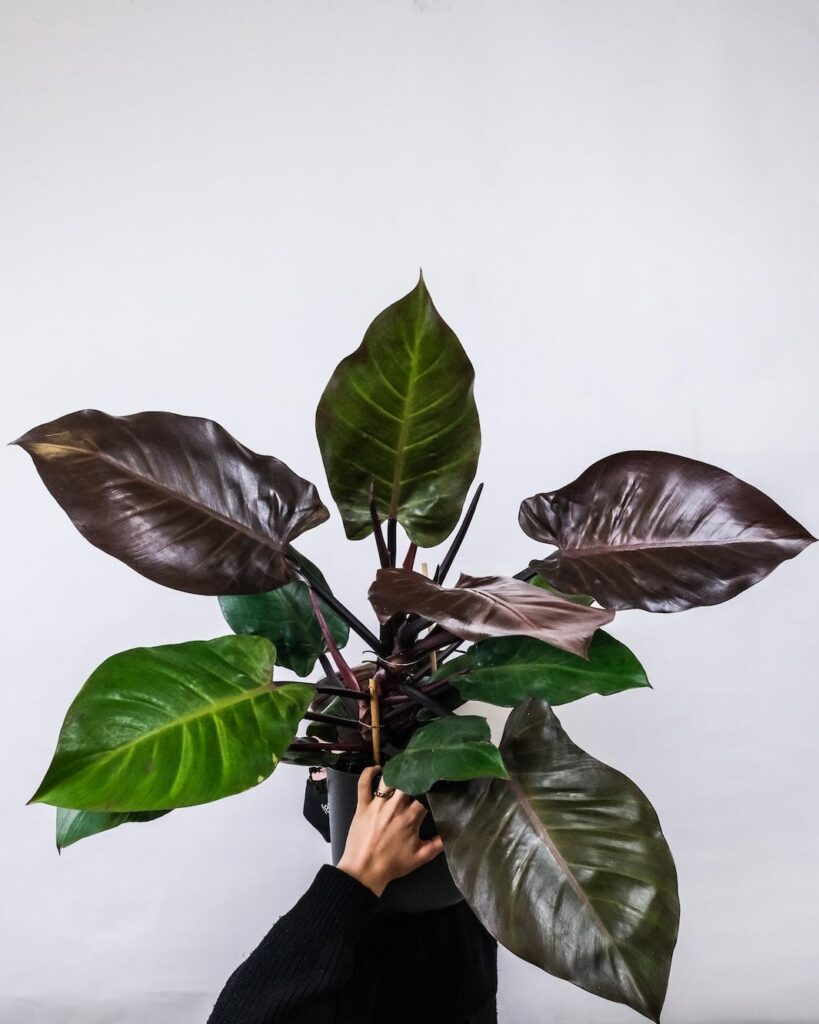
- Variegated philodendron: This type of philodendron has leaves that are green and white, or green and yellow.

- Pink-leaf philodendron: This type of philodendron has leaves that are pink in color.
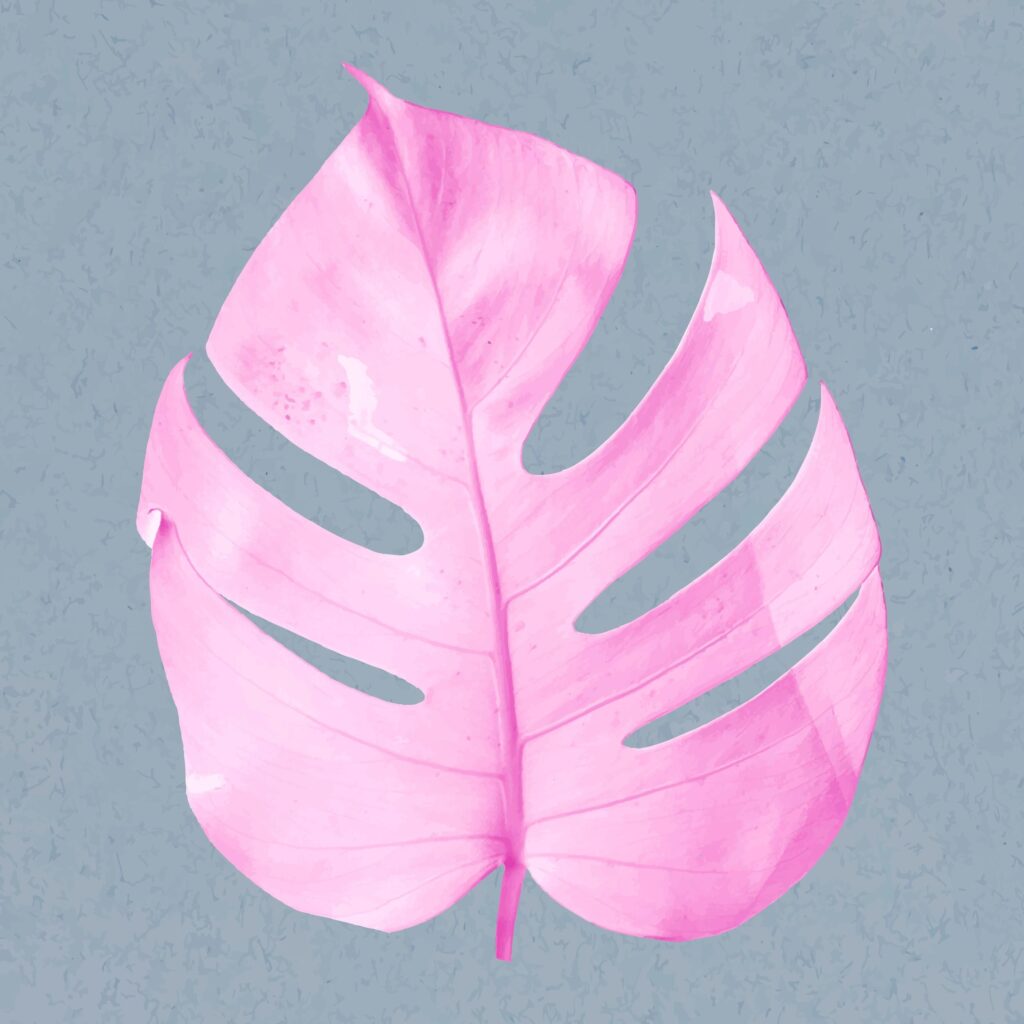
- Orange-leaf philodendron: This type of philodendron has leaves that are orange in color.
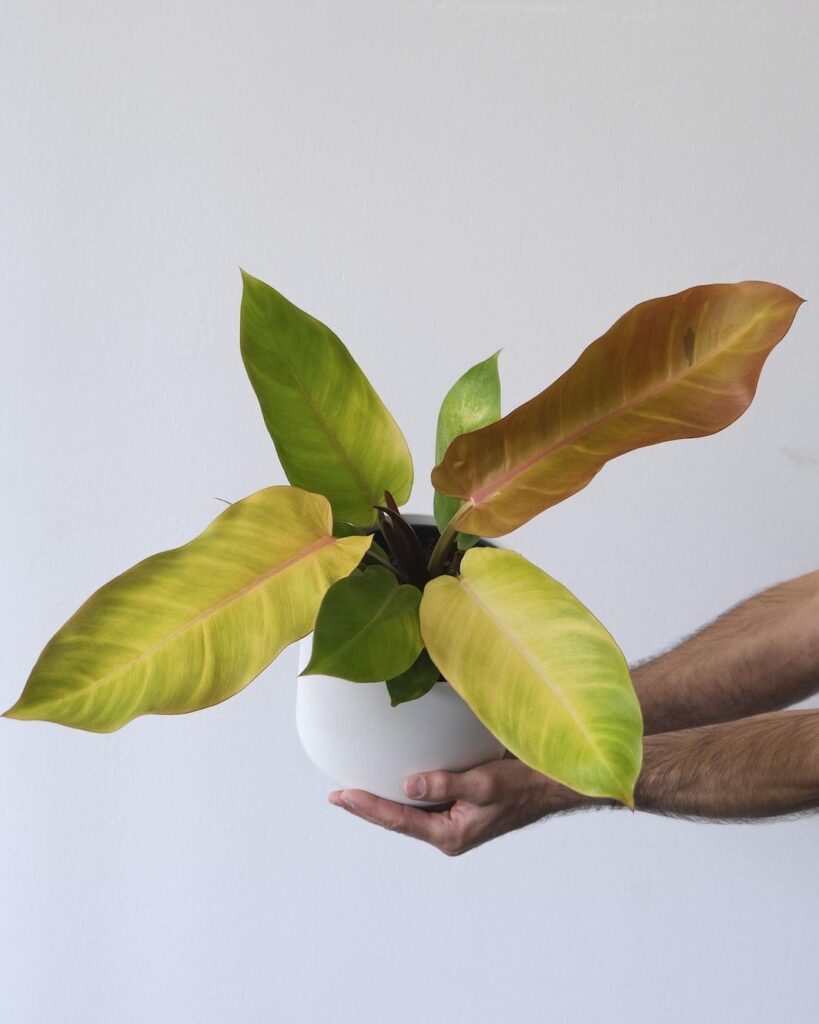
- Yellow-leaf philodendron: This type of philodendron has leaves that are yellow in color.
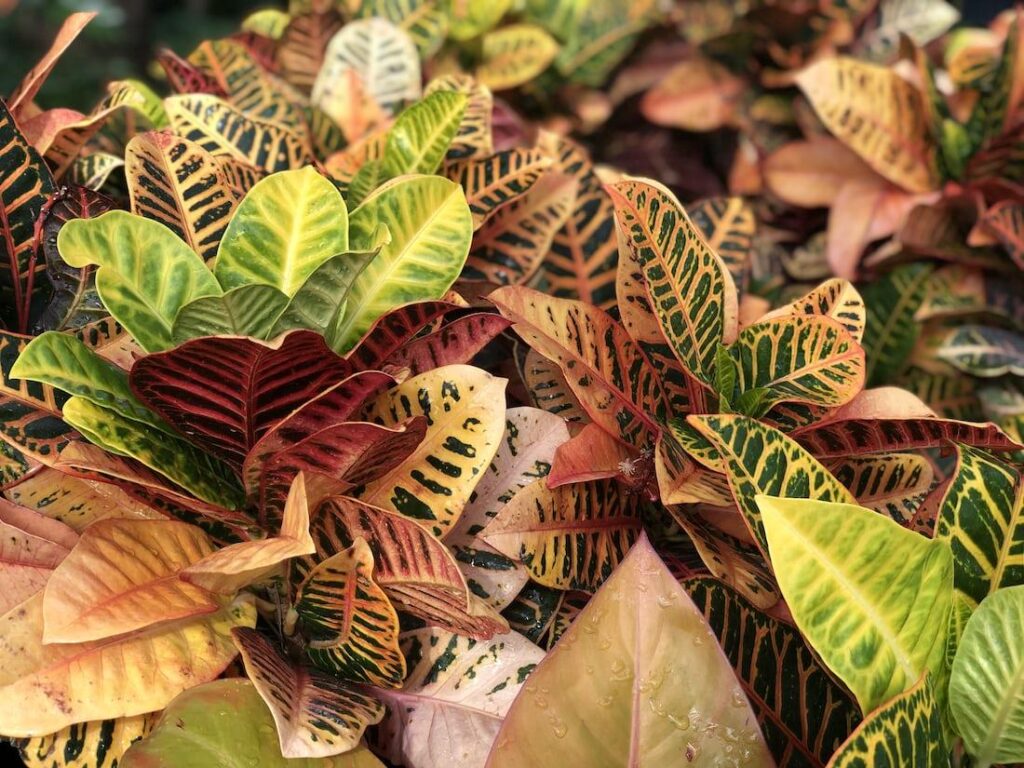
- Purple-leaf philodendron: This type of philodendron has leaves that are purple in color.

No matter what type of philodendron you choose, it’ll definitely add color to your home.
The Most Popular Philodendrons
- The Philodendron hederaceum, or sweetheart plant, is one of the most popular philodendrons. It is known for its heart-shaped leaves and is often used as a houseplant.
- The Philodendron scandens, or climbing Philodendron, is another popular philodendron. It is known for its ability to climb up trees and other surfaces.
- The Philodendron erubescens, or red-leaf Philodendron, is another popular philodendron. It is known for its red leaves.
- The Philodendron bipinnatifidum, or tree Philodendron, is another popular philodendron. It is known for its tree-like growth habit.
- The Philodendron selloum, or saddle leaf Philodendron, is another popular philodendron. It is known for its large, leathery leaves.
Philodendrons For Beginners
If you’re new to philodendrons, here’s a quick guide to help you start off right.
- First, philodendrons are tropical plants, so they need warm temperatures and lots of humidity. If you live in a cold climate, you’ll need to provide extra warmth and humidity for your philodendron. One way to do this is to keep your philodendron in a terrarium or greenhouse.
- Philodendrons like to climb, so you’ll need to provide them with something to climb on, like a trellis or a moss pole.
- Philodendrons are heavy feeders, so they need to be fertilized regularly. A good rule of thumb is to fertilize every two weeks during the growing season and every month during the winter.
- Finally, philodendrons are poisonous, so keep them away from pets and small children.
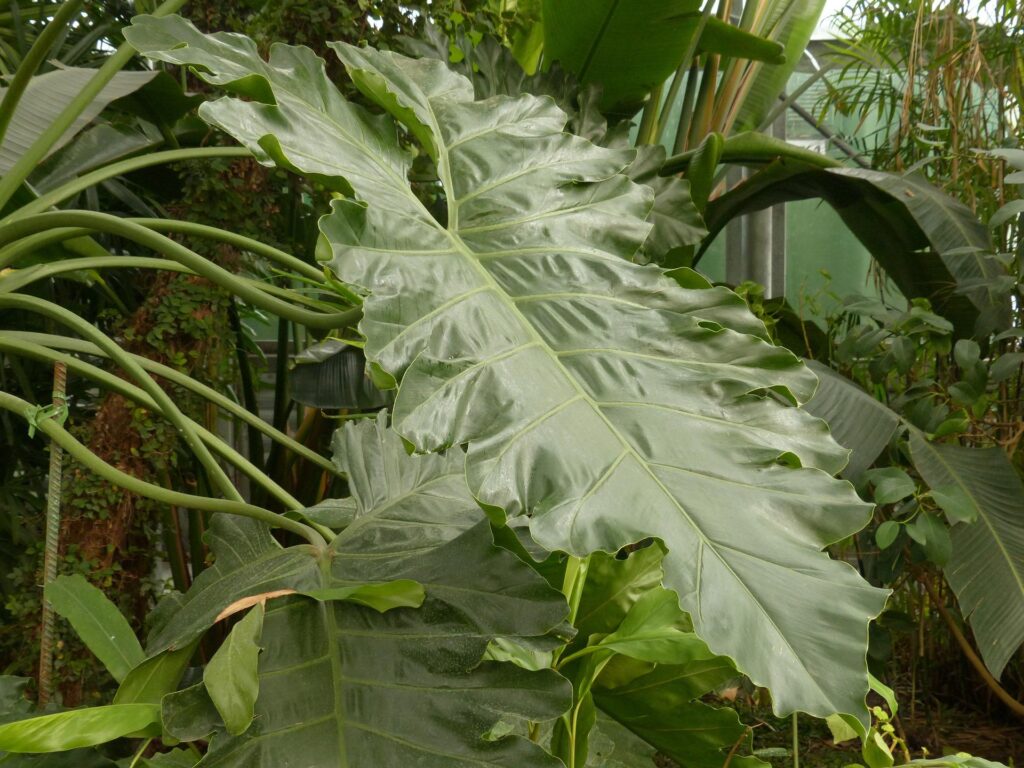
Frequently Asked Questions About Philodendrons
1: What are the best light conditions for a Philodendron?
Philodendrons thrive in bright, indirect light. While they can tolerate lower light levels, their growth may slow down. Avoid placing them in direct sunlight, as this can scorch their leaves.
2: How often should I water my Philodendron?
Water your Philodendron when the top inch of soil feels dry to the touch. Make sure the pot has good drainage to avoid waterlogging. During the growing season (spring and summer), you may need to water more frequently, while in winter, reduce watering.
3: Can Philodendrons be grown outdoors?
Yes, Philodendrons can be grown outdoors in tropical climates where the temperature remains consistently warm. They do best in partial to full shade and require high humidity. In cooler climates, they should be kept indoors.
4: How do I propagate a Philodendron?
You can propagate Philodendrons by taking stem cuttings. Cut a healthy stem just below a node and place it in water or well-draining soil. Keep the cutting in a warm, humid spot, and it should root within a few weeks.
5: Are Philodendrons toxic to pets?
Yes, Philodendrons are toxic to cats and dogs if ingested. Specifically, they contain calcium oxalate crystals, which can cause irritation in the mouth and throat. Consequently, if your pets happen to chew on the leaves or stems, it can lead to discomfort and potential harm. Therefore, to ensure your pets’ safety, it’s essential to keep your Philodendron out of their reach. Moreover, being mindful of where you place your plants will help prevent any accidental ingestion and protect your furry friends.
Bonus Tips
- Put it in a bright spot near a window.
- Water it when the soil feels dry to the touch.
- Feed it every other month with half-strength fertilizer.
- Prune it as needed to keep it looking tidy.
- Provide bright, indirect light and keep the soil moist, but not soggy.
Conclusion
The Philodendron is a beautiful and easy-to-care-for plant that makes a great addition to any home. With its large, dark green leaves, the Philodendron is sure to make a striking statement in any room, adding both vibrancy and elegance. Moreover, this plant is not only visually appealing but also practical, as it thrives with minimal effort.
In addition, our ultimate guide to this beautiful plant serves as a comprehensive, step-by-step resource to help you care for your philodendron. Whether you are a beginner or an experienced gardener, this guide covers everything you need to know, from the plant’s rich history to the different types and the many benefits it offers. Consequently, with the knowledge from this guide, you’ll be able to ensure your philodendron thrives in your home for years to come.
Michelle Wilde
Related posts
3 Comments
Leave a Reply Cancel reply
![]()
About Michelle Wilde
Michelle Wilde is a stay-at-home mom and avid plant lover. Armed with a post-graduate degree in Computer Science (no kidding!), she loves researching plants and landscapes. When she is not caring for her 4 kids, she spends time on her passion for plants. She blogs at www.indoorplantschannel.com, the trusted source for indoor plants.
Learn more
Subscribe
* You will receive the latest posts and updates about indoor plants!
Search
Recent Posts
Categories
- Beginner Guides (10)
- FAQ (206)
- General (2)
- How-To Guides (212)
- Indoor Plants (214)
- Pest Management (2)
- Plant Problem Solutions (4)
- Seasonal Growing (2)
- Specialized Environments (2)
- Specific Plant Care (3)
- Technical Growing (2)
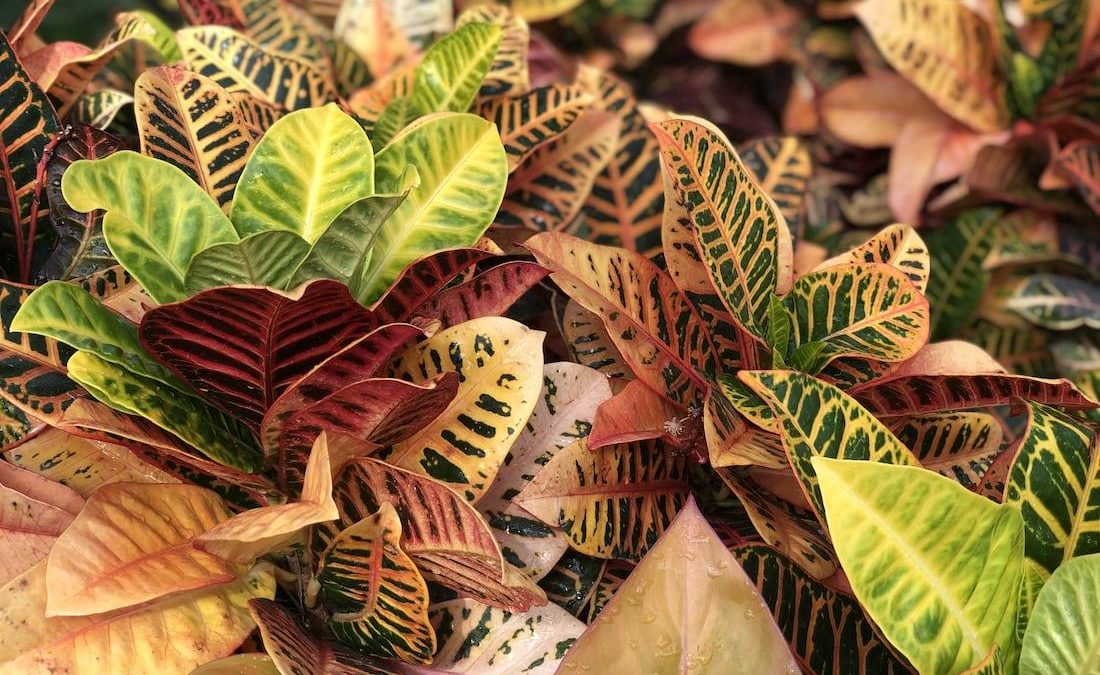
[…] you love the look of Philodendron Bipinnatifidum but don’t know how to care for it? Don’t worry, we’ve got you covered. In this blog post, […]
[…] Philodendrons are low maintenance plants that do not require much water or sunlight to grow. When watering your philodendron, make sure the soil is dry before watering it again. It is best to water it about once a week. […]
[…] is a member of the Araceae family, which includes a wide range of plants such as philodendrons, anthuriums, and […]